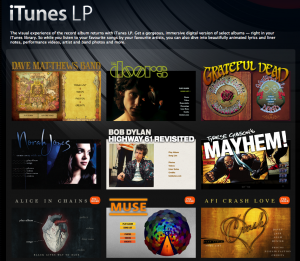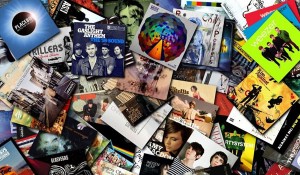Sound Information: Metadata For Your Music
In the days of vinyl and tape cassettes, providing your listeners with information about your music was simple: Everything from song titles to song-writers, lyrics to album art, engineering credits to UPC codes, could be included in the sleeve or album sticker, and that was that.
Today, what drives growth in the industry are music downloads, rather than physical sales, which continue their slow decline. But even as consumers increasingly turn away from physical media, we haven’t lost liner notes entirely. They’ve just begun to move onto our hard drives and into the cloud.
Current tools for sharing essential info, basic credits and album artwork on digital files can still be improved industry-wide. But as things stand, if your release is missing all of these things, the fault does not lie with the technology. And as complex as all the metadata options may sound, breaking them down into a few main categories to help bring the whole field into focus.
Today, we’ll be discussing CD-Text, ID3 tags and online databases – the three main vehicles for distributing the information and extras that you can provide with a digital release.
CD-Text
The first way of sharing album information with fans digitally has been around since 1996, and can be burned right into CDs. If you ever pop a disc into a car stereo, or a home DVD/CD player and see the titles of the each song listed on your display, you can thank CD-Text for that.
The CD-Text protocol allows us to bake a wide variety of information right onto the disc: The names of artists, composers and arrangers, as well as titles of albums and songs, and even the boring-but-essential stuff like UPC codes for albums and ISRC codes for each song (which help with tracking sales and radio play.)
If you get your music professionally mastered, your mastering engineer can put this CD-Text information directly into a physical CD “Premaster” or a DDP file, that you would send to a large-scale replication house.
But even if you’re just duplicating short-run copies at home or with a small-scale duplicator that can’t handle the DDP files used at big replication firms, that doesn’t mean you have to leave this information off of your release.
If you’re burning your own CDs from a set of raw WAV or AIFF files sent by your engineer, many simple consumer programs can include CD-Text these days. In the case of iTunes, all you have to do is check a box to enable CD-Text. For a bit more power and flexibility, there are affordable programs like Roxio Toast or the free “Burn” for Mac.
Even though the sales of physical CDs are continuing to shrink, some people still prefer them, and those listeners add up to nearly half the total music-buying market. They’re an even more significant force than that if we’re talking about albums rather than singles. Those who still prefer CDs often listen to music on conventional disc players, and if you leave out CD-Text, you’re leaving out an essential perk for many of your listeners.
Artwork, album credits and other liner notes that can’t fit into CD-Text, but the answer here is obvious: Fans of CDs like the format in part because of its physicality. All of this can be included in a physical booklet – So include one!
It’s also worth noting that CD-Text does not embed any information on the music files themselves. Rather, it is part of what you might call the container file for the CD . This means that if you import your CD into a computer, information that is included only via CD-Text may not make the transition, and you’ll be leaving the majority of new music fans without even the most basic information, such as song-titles or artist and album name.
Online Databases (CDDB, AMG and more)
Computer-based music players and portable listening devices may not recognize CD-Text, but they have another way of finding and displaying the information – and even the artwork – associated with your music: These programs rely on comprehensive online databases to pull this data from the cloud and store it along with your files on your drive.
To provide this feature, iTunes uses Gracenote’s CD Database or “CDDB.” Windows Media Player provides a similar free service using AllMusic’s “AMG” database. There are also slimmer databases that are free for small-scale software developers to integrate into their programs, such as freedb and MusicBrainz.
Getting your art and information into these databases isn’t hard. If you’re releasing an album through an already-established label or a digital distributor like CD Baby or Tunecore, they’ll help you add your info to The major databases when you submit your music.
If you’re on your own on this front, you can enter tags and submit them to the CDDB easily through iTunes. To get recognized by Windows Media Player, you’ll have to mail a retail-ready physical CD to AllMusic. They take care of new submissions in 4-6 weeks.
ID3 Tags
These online databases use the same protocol as computer-based music players and portable devices like iPods. The data is stored using “ID3 tags” which embed information on MP3s, AACs, and even uncompressed WAV files.
Unlike CD-Text, ID3 tags are written right into each file. This format has many of the same fields as CD-Text, plus a few more like “Album Artist” that are handy for keeping things organized inside of a large library. With the ID3, you even have the option of including album artwork, which is impossible with CD-Text.
To add ID3 tags to your releases, you can either work with a label or digital distributor like CD Baby or Tunecore, or add them yourself using a simple tag editor – many of which are free or affordable. Popular programs include MP3Tag (PC), Tagr, Tag, or Fission, (Mac), ID3 Editor, Jaikoz and even iTunes (Mac/PC). You could also ask your Mastering Engineer to help with this. I do it as an added service for my clients all the time.
For some inexplicable reason, there are a few fields in CD-Text that are not included in ID3: chief among them are slots for UPC and ISRC codes, which can be used to help track sales and radio play.
Thankfully, ID3 incorporates an open ended “comments” section that allows for inclusion of this data as well as all sorts of extras, like web addresses, album credits, thank-you lists and the like.
In theory, there should be no limit to what you can add in the comments section, making it a near-perfect place to include digital liners. But in practice, some programs truncate the comments section. iTunes, for instance, will not let you include more than 255 characters in this field. And if you use another program to add more text, it will be chopped down to 255 characters when brought into iTunes.
(This is one of the last major issues with iTunes, along with Apple’s refusal to make sure that a transparent, intelligent, volume normalization is enabled by default. Fixing these two shortcomings would immediately help to slam the book shut on two of engineers’ favorite complaints: In one fell swoop, we could bring an end to the lack of proper digital accreditation and help to bring the loudness war to a close once and for all. As a side note, some people will tell you that automatic volume normalization features like iTunes’ Soundcheck degrade sound quality. Perhaps this was once true, but as things stand now, this is wrong. What these technologies actually do is simply and transparently turn down the volume on the loudest albums, providing a more seamless listening experience and a dis-incentive to make albums sound worse just so that they can sound louder.)
An Under-Explored Frontier: The Digital Booklet
So, if the biggest digital music retailer in the known universe has what is essentially a broken “comments” field, then what’s an artist to do about comprehensive digital liner notes?
Fortunately, there’s an alternative that has been available for several years now, but remains woefully underutilized. iTunes and Amazon now allow artists to include digital booklets of 4 pages or more along with their releases. It costs next to nothing to make these virtual liner notes available to your fans, and I recommend it to anyone who asks. (And even to people who don’t.) Unlike physical CD inserts, these digital booklets use a 4:3 ratio to take advantage of the full viewing area on-screen. Adapting the CD art you’re already using into this format is not difficult at all.

Albums available via iTunes LP
In an even more ambitious move, Apple announced a next-generation interactive booklet called the iTunes LP in 2009. Thanks to the fact that it was initially restricted to major labels only – as well as the fact that those labels were less than enthusiastic to participate – the format has yet to take off.
However, this new high-res, interactive take on metadata still has plenty of promise. And it’s now open to independent artists. Hopefully, at some point, they might lead the way in doing a lot more with it than the majors have. Compared to building an interactive app for new albums, such as Björk and Philip Glass have done, creating a stunning iTunes LP takes relatively little skill.
Like many good ideas, the possibility of engaging, comprehensive digital liner notes may have become made feasible before the market was ready for it. But in the future, it seems likely that immersive, full-featured digital album art will someday become the norm. It’s certainly one of the things I miss most about physical formats.
Even if digital media can never completely reproduces the tactile satisfaction of a format like vinyl, if we can begin to offer even a sliver of that experience, by moving metadata out of the realm of tech geekery and into the realm of art, we’ll have gone a long way toward improving the experience of recorded music for countless millions of fans.
Justin Colletti is a Brooklyn-based audio engineer, college professor, and journalist. He records and mixes all over NYC, masters at JLM, teaches at CUNY, is a regular contributor to SonicScoop, and edits the music blog Trust Me, I’m A Scientist.
Please note: When you buy products through links on this page, we may earn an affiliate commission.








Devlin Miles
August 2, 2014 at 8:23 am (11 years ago)Great article. It has helped me find some answers as we are preparing to release a new indie album. It is important to have that leg up if a fan shares your music anywhere that it easily be identifiable or you are dead in the water. I love the idea of improving the whole digital experience with full album jackets. It would indeed improve the whole experience.
Best – Devlin Miles, Sweet Little Bloodhound